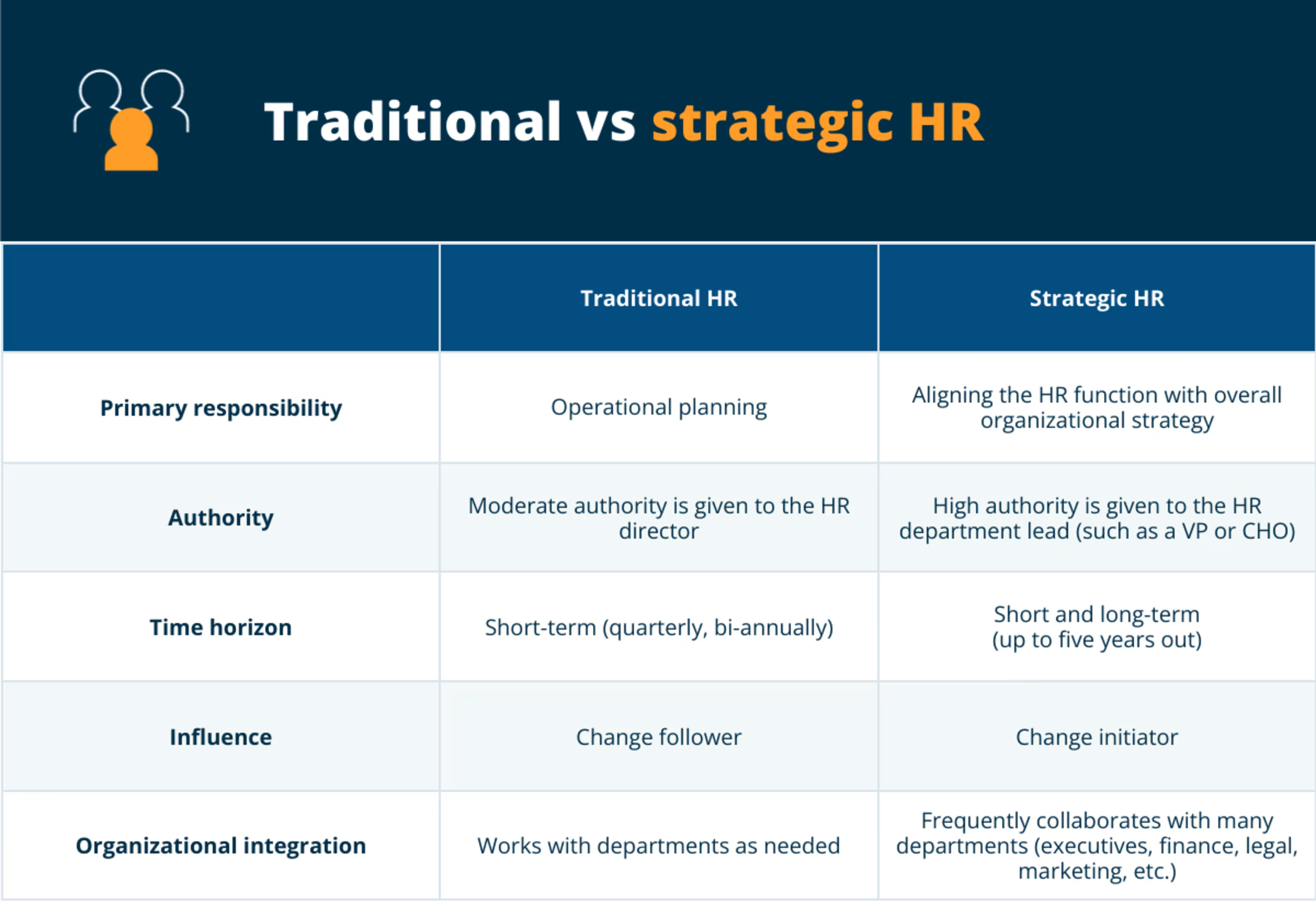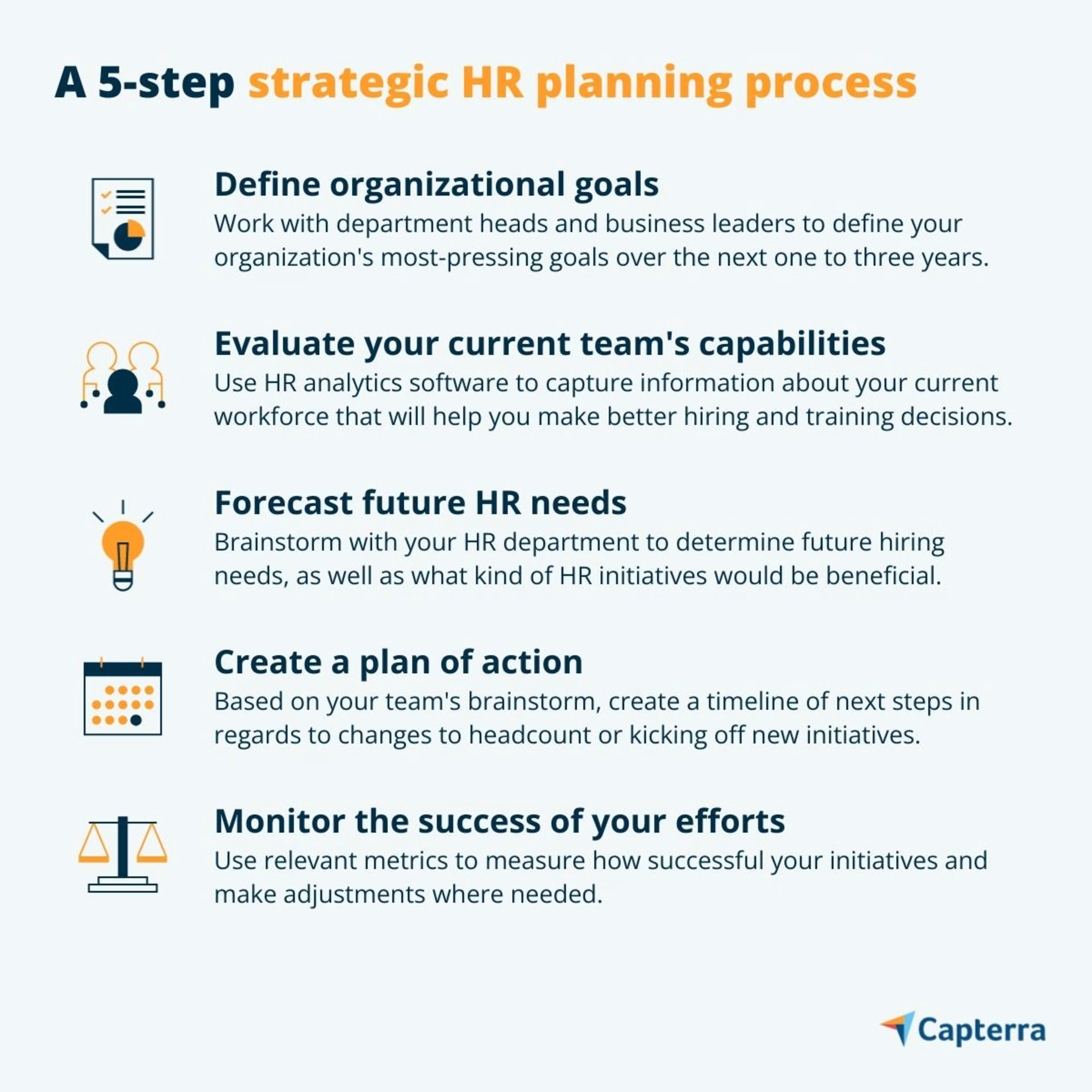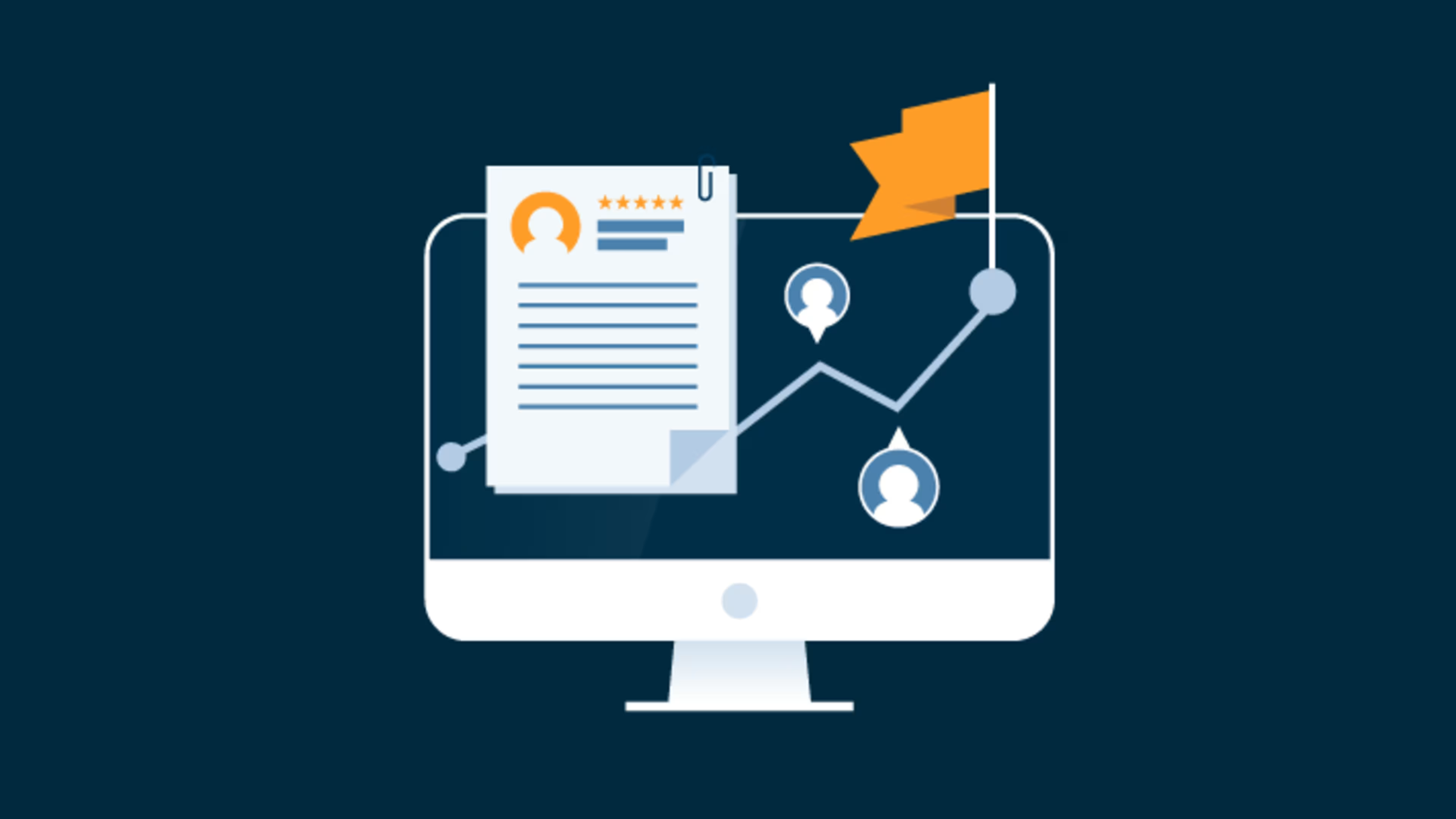Strategic HR planning helps your organization work together to achieve business goals. Learn all about strategic HR below.
Historically, the human resources function has been more administrative than strategic. But today, almost every leading global company’s HR department is involved in future planning and strategic decision-making.
According to SHRM, however, HR professionals in small to midsize organizations are not involved in organizational strategic planning. And even more concerning, Gartner found that only a little over a third of organizations find their HR function to be effective at strategic planning (full source available to clients).
If you’re a part of the remaining majority that’s behind the curve, this guide is for you.
In it, we’ll explain what strategic HR is, its long-term benefits, and provide an overview of the process in order to help you, an HR leader, put your organization on a path to sustainable success.
1. What is strategic HR planning?
Gartner defines strategic HR planning like this: “HR leaders plan for business risks and opportunities by prioritizing and allocating resources to HR initiatives.”
When put into action, this includes:
Aligning business and HR strategies
Defining HR priorities relative to critical business initiatives
Adjusting the execution of initiatives as business conditions change
With a traditional human resource management strategy, actions taken by the HR department are often reactive. For example, recruiters will focus on backfilling roles that become open due to turnover, or answering employees’ questions about benefits or compensation as they arise.
Strategic human resource management is more anticipatory. For instance, instead of waiting for questions to be asked or workers to leave their roles, HR professionals may develop a self-service employee knowledge base or start an initiative to improve their employees’ job satisfaction.
Put simply, strategic HR helps plan for the future of the organization, rather than just support the present.

2. What are the benefits of strategic HR?
Businesses that practice strategic HR experience a variety of benefits, including:
Better alignment between HR strategy and business strategy: The number one benefit of strategic HR planning is that the HR department is actively involved in helping achieve business goals. For example, if your business has a goal to improve efficiency, HR will support this by looking for opportunities to automate workflows and analyzing information on employee productivity and attendance.
Well-thought-out hiring initiatives: Workforce planning is an element of strategic HR that anticipates your organization’s hiring needs over the next two to five years. This allows your team to make better decisions about how to effectively use the talent you have, as well as what sort of resources should be allocated to recruiting efforts and when.
More effective training and development programs: Planning training and development initiatives that align with business goals is another important aspect of a strategic HR approach. For instance, if it becomes clear through workforce planning that a handful of senior leaders are set to retire in the next few years, you can invest in a leadership development program in order to prepare current employees with high potential to step into those roles.
Ready to hire a staffing agency for your business needs? Browse our list of companies in the following areas:
3. An overview of the strategic HR planning process

Start by defining organizational goals
It’s best to know where you’re headed before starting the journey, which is why the first step in strategic HR is to define your organization’s most pressing business goals. Whether it be improving customer service or branching out into new markets, work with department heads and C-level leaders to outline your organization’s primary goals over the next one to three years.
Evaluate your current team’s capabilities
The next step of strategic HR planning is to audit your workforce. The purpose of this audit is to gain an sense of the skills and potential of your current employees, including the HR department itself.
HR analytics software can help you collect and analyze information such as the headcount, distribution of skills, development potential, and age demographics of your current employees. Check out the 2021 Capterra Shortlist for an overview of the best HR analytics tools on the market right now.
Forecast future HR needs
Knowing your organization’s future goals and the state of your current workforce, the next step is to brainstorm into the future with your HR team. To keep this brainstorm on track, focus on answering the following questions:
Which high priority skills do we need to acquire over the next few years?
Are there current employees that we can train as a means to acquire new skills?
Should we increase or decrease our headcount? By how much?
Which company-wide HR initiatives would be the most beneficial considering our organization’s goals (e.g. improving employee engagement, establishing an employee well-being program, increasing productivity, capturing employee referrals, etc.)?
Conducting a skills gap analysis will help you answer some of the above questions. Check out "A Better Way To Do a Skills Gap Analysis" for an overview of the process and advice for how to execute each step.
Create a plan of action
Next, it’s time to develop a plan of action based on your forecasted HR needs. The specific steps your team needs to take will depend on how you answered the questions in step three. For example, if you determine that you will need to significantly increase headcount over the next few years, your team should begin to draft a timeline of open positions and target dates for when to fill them.
Is upskilling a part of your plan of action? These resources may help:
Continuously monitor your strategy’s success
Strategic HR is an ongoing effort, but that doesn’t mean you shouldn’t measure the impact of your actions. The metrics you use to judge your success will vary depending on the focus of your plan; for instance, if your team launched an employee engagement initiative, you can compare absenteeism, voluntary turnover, and productivity metrics to their pre-initiative rates to give you an idea of how effective your initiative was.
Investing in business intelligence or HR analytics software will make tracking these metrics easy. These tools can be used to create custom dashboards that populate with real-time data and build reports that you can share with stakeholders.
Before you go, bookmark these resources
In the world of HR, there’s always more to learn. Lucky for you, we’re always working on new research and resources that help your team stay up to date.
Head to our talent management blog to find more content like this guide. Here are some recent titles that might spark your interest:

